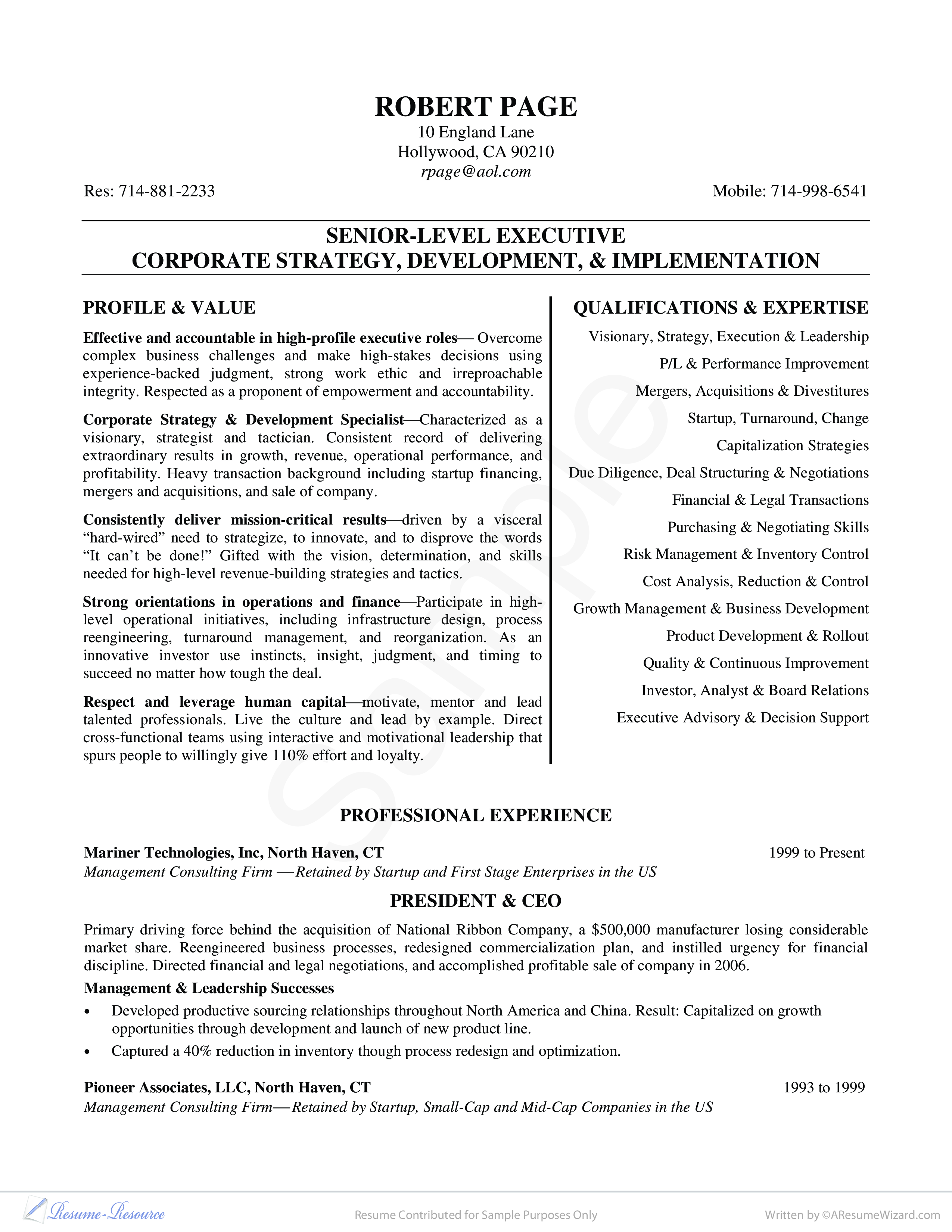Senior-Level Executive Curriculum Vitae

Enregistrer, Remplir les champs vides, Imprimer, Terminer!
What are the best ways to write a senior executive CV? A CV for an executive should contain what information? Download this Senior-Level Executive Curriculum Vitae now!
Formats de fichiers gratuits disponibles:
.pdf- Ce document a été certifié par un professionnel
- 100% personnalisable
Business Entreprise Resume Résumé CV management la gestion work travail career carrière company entreprise economy économie ceo resume ceo reprendre cv sample échantillon cv Leadership Direction Accountability Responsabilité Strategic Management Gestion stratégique Startup Company Entreprise en démarrage Million Mergers And Acquisitions Fusions Et Acquisitions Resume Examples Exemples de CV Resume Samples Reprendre des échantillons Development Développement Business Process Reengineering Réingénierie des processus Executive Resume Résumé exécutif executive curriculum vitae sample exemple de curriculum vitae exécutif
What are the best ways to write a senior executive CV? A CV for an executive should contain what information? Our template is designed to help you showcase your skills and experience in a concise and efficient way. It includes sections for personal details, education, experience, skills, and references. You can also customize it with your own photo. Download this Senior-Level Executive Curriculum Vitae now!
A senior-level executive curriculum vitae (CV), often referred to simply as an executive CV, is a detailed document that outlines the professional background, qualifications, and accomplishments of a senior executive in a company or organization. This type of CV is specifically designed for individuals at the highest levels of management, such as CEOs (Chief Executive Officers), CFOs (Chief Financial Officers), CMOs (Chief Marketing Officers), CIOs (Chief Information Officers), and other top-level executives.
Here are some key characteristics and components typically found in a senior-level executive CV:
- Contact Information: This section includes the executive's name, contact number, email address, and sometimes a professional summary or LinkedIn profile link.
- Executive Summary: A concise paragraph or two that provides an overview of the executive's career highlights, leadership experience, and key skills.
- Professional Experience: This is often the most substantial section of the CV and details the executive's work history. It includes the names of previous employers, job titles, employment dates, and a description of key responsibilities and achievements. It may also highlight the size and scope of the organizations the executive has worked for.
- Accomplishments and Achievements: Senior executives are expected to have a track record of significant accomplishments. This section showcases notable achievements, such as revenue growth, cost savings, successful leadership initiatives, and major projects.
- Leadership and Management Skills: This section outlines the executive's leadership style, management skills, and ability to lead teams. It may include information about the size and composition of teams they have managed and their approach to leadership.
- Education: Details about the executive's educational background, including degrees earned, institutions attended, and graduation dates. It may also include any relevant certifications or executive education programs.
- Board Memberships and Industry Involvement: Many senior executives serve on corporate boards or are involved in industry associations. This section highlights these roles and their contributions.
- Awards and Honors: Any awards, honors, or recognitions received during the executive's career can be included to showcase their achievements and recognition by peers and organizations.
- Publications and Public Speaking: If the executive has authored articles, books, or has a history of public speaking engagements, this information can be included to demonstrate thought leadership and expertise in their field.
- References: Some senior executives choose to include references or letters of recommendation from influential figures in their industry or from respected colleagues.
Senior-level executive CVs are typically longer and more comprehensive than standard resumes, often spanning several pages. They are tailored to highlight an executive's leadership abilities, strategic thinking, and impact on the organizations they have led. These CVs play a crucial role in helping senior executives secure high-level positions or board seats in prominent companies or organizations.
Download this Senior-Level Executive Curriculum Vitae template now and enhance your career!
AVERTISSEMENT
Rien sur ce site ne doit être considéré comme un avis juridique et aucune relation avocat-client n'est établie.
Si vous avez des questions ou des commentaires, n'hésitez pas à les poster ci-dessous.
